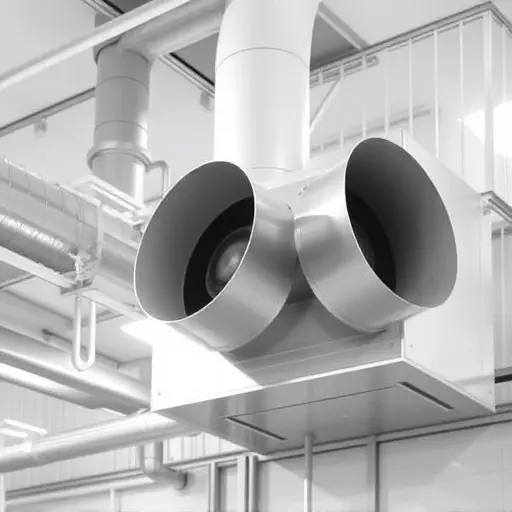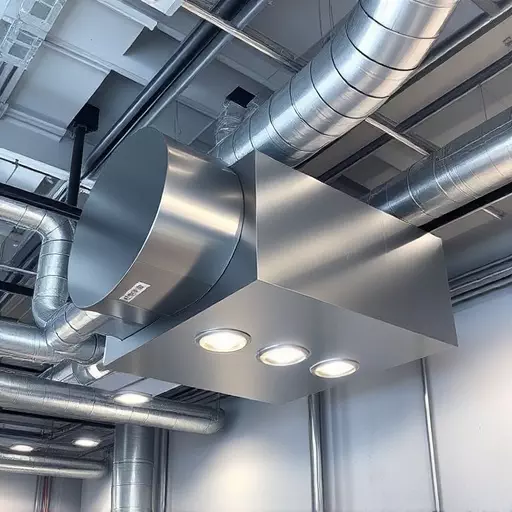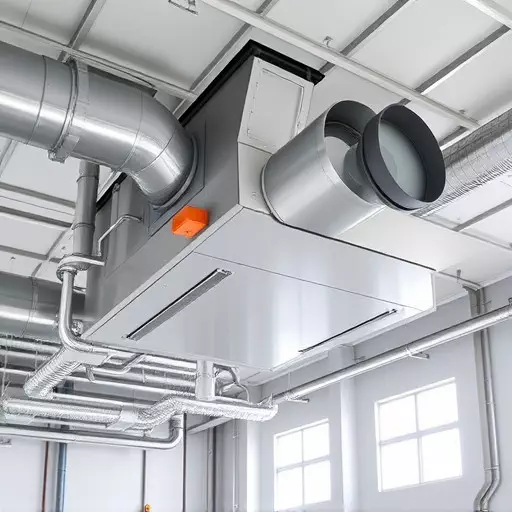In dynamic industries, effective industrial ventilation solutions are crucial for worker safety, production optimization, and regulatory compliance. Tailored systems manage hazardous fumes, gases, and dust through a combination of exhaust ventilation (removing contaminants) and supply ventilation (circulating fresh air). By considering industry-specific factors, professionals design strategies that enhance efficiency while meeting standards. Exhaust ventilation removes harmful pollutants, while supply ventilation systems introduce clean air, maintaining balanced indoor air quality. Regular maintenance ensures optimal performance and safety in environments with VOCs or noxious substances.
In the realm of industrial safety and efficiency, proper ventilation is paramount. This article explores comprehensive industrial ventilation solutions, with a focus on exhaust ventilation solutions that are essential for maintaining optimal air quality in various work environments. We delve into the intricacies of understanding specific industrial ventilation needs, discussing diverse exhaust ventilation solutions and their implementation. Additionally, we provide insights on effectively integrating supply ventilation systems while adhering to best practices for enhanced safety and improved working conditions.
- Understanding Industrial Ventilation Needs
- Types of Exhaust Ventilation Solutions
- Implementing Supply Ventilation Systems Effectively
- Best Practices for Optimal Air Quality and Safety
Understanding Industrial Ventilation Needs

In the dynamic landscape of industrial operations, understanding and implementing effective ventilation strategies is paramount to ensuring worker safety, optimizing production processes, and adhering to environmental regulations. Industrial ventilation solutions are tailored to address specific challenges posed by diverse industries, from manufacturing and pharmaceuticals to food processing and automotive assembly lines. These systems play a crucial role in managing hazardous fumes, toxic gases, dust particles, and other airborne contaminants that can accumulate in enclosed spaces. By facilitating the efficient removal of exhaust gases and introducing fresh air through strategic supply ventilation systems, industrial facilities can create safer, healthier, and more productive work environments.
Comprehensive industrial ventilation solutions encompass both exhaust ventilation systems designed to expel harmful substances from the workplace and supply ventilation systems responsible for providing adequate fresh air circulation. The integration of these systems is essential to maintain a balanced indoor air quality (IAQ) profile. By carefully considering factors such as the type of industry, building layout, equipment used, and worker activities, professionals can design tailored ventilation strategies that meet or exceed regulatory standards while promoting operational efficiency and sustainability.
Types of Exhaust Ventilation Solutions

In the realm of industrial ventilation solutions, exhaust ventilation plays a crucial role in maintaining optimal air quality and worker safety. Exhaust ventilation solutions are designed to remove contaminated or hazardous gases, vapours, and particles from enclosed spaces, replacing them with clean, fresh air. These systems are particularly vital in industries where chemical processing, welding, painting, or other activities generate noxious fumes.
There are several types of exhaust ventilation solutions available, each suited for different applications. Supply ventilation systems, for instance, introduce fresh air into a workspace while removing exhaust air, enhancing overall airflow and air quality. This approach is effective in open, spacious areas. In contrast, local exhaust ventilation systems focus on capturing contaminated air at its source, such as near industrial processes or machinery, and exhaust it directly outdoors or to a safe containment area. These systems are more targeted and efficient for specific tasks, like welding operations or paint mixing.
Implementing Supply Ventilation Systems Effectively

Implementing Supply Ventilation Systems Effectively
In the realm of industrial ventilation solutions, supply ventilation systems play a pivotal role in maintaining optimal air quality and worker comfort. These systems introduce fresh, clean air into work areas, thereby enhancing overall productivity and safety. By strategically placing vents and controlling airflow, businesses can ensure that hazardous fumes, dust, and other pollutants are effectively diluted or exhausted from the workspace. This is particularly crucial for industries involving chemical processing, metalworking, or any other activities that generate noxious gases.
Effective implementation of supply ventilation systems involves careful consideration of factors like room layout, source of contamination, and air flow patterns. Professional engineers often recommend a combination of ceiling-mounted vents, wall-mounted units, and local exhaust ventilation to achieve the best results. Regular maintenance is also paramount; cleaning filters, inspecting ducts, and replacing worn components ensure the system operates efficiently and safely over time. This proactive approach not only enhances indoor air quality but also contributes to a healthier, more productive work environment for exhaust ventilation solutions and industrial ventilation solutions.
Best Practices for Optimal Air Quality and Safety

Maintaining optimal air quality and safety in industrial settings is paramount, and effective exhaust ventilation solutions play a pivotal role. The best practices involve integrating industrial ventilation systems that not only expel harmful pollutants and fumes but also ensure adequate replacement air. This balanced approach prevents the buildup of hazardous gases, ensuring a safe working environment for employees.
One key strategy is to implement supply ventilation systems alongside exhaust ventilation solutions. By introducing clean, fresh air at strategic points while removing contaminated air from specific areas, these systems create a positive pressure environment that hinders the infiltration of outside pollutants. Regular maintenance and system monitoring are equally crucial to guarantee continuous efficiency and safety compliance, particularly in environments where volatile organic compounds (VOCs) or other noxious substances are present.


